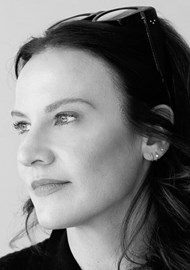The author explores the aesthetic impact of hormonal ageing during the perimenopausal, menopausal and postmenopausal periods. The author explains that oestrogen levels can impact upon several skin functions, including: excessive hair growth, pigmentation, vascularity, elasticity and water-holding capacity. A detailed description of the menopausal period follows with a discussion of the impact of subsequent reduced collagen and skin function with referenced statistics of the reduction of skin thickness and collagen depletion. Whilst the focus of the paper is the impact of the menopause, components of extrinsic ageing could have been explored in more detail. A comprehensive overview of the role of oestrogens is explored, with discussion of how decreasing levels can age the skin, as well as the effects of hypoestrogenism, reinforcing the effects of this physiological phenomenon, exacerbating the deleterious effects of intrinsic and extrinsic ageing. The author suggests that nurses providing aesthetic treatments should adopt a holistic approach to health and beauty by recommending a healthy diet, as well as supplementation of vitamins but does not allude as to which would be recommended. Discussion surrounding non-invasive aesthetic procedures to treat the dermatological changes described include botulinum toxin, microneedling and radiofrequency. Poly-L-lactic acid is the only biostimulatory agent discussed for treating soft tissue descent. Whilst the author places emphasis on aesthetic nurses having a strong awareness of the roles of hormones in maintaining skin conditions, it may have proved insightful for the author to provide information to signpost nurses where they may access ongoing training to maintain specialist knowledge into treating menopausal symptoms.
Age-related changes in the menopausal woman
Reviewed by Anna Baker
Age-related changes in the menopausal woman: the role of hormones in the skin.
CONTRIBUTOR
Anna Baker
The Retreatery Medical Aesthetic Clinic, East Grinstead, UK.
View Full Profile



